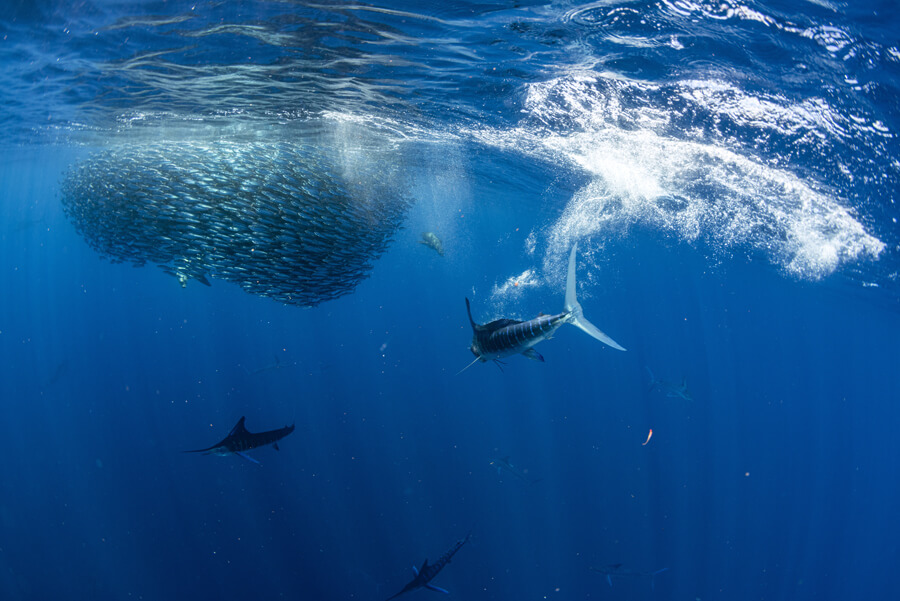The streets of Cabo San Lucas are closed every October 18th for a parade to honor the city’s patron saint, Saint Joseph. I sometimes talk about Saint Joseph’s feast day parade as the reason I started visiting Los Cabos, since we share the name, but those who know me best know full well it was the marlin.

The best time to experience a bait ball and frenzied billfish on the fly is late October though late November, as long as favorable conditions prevail and the sardines do not move out too quickly.

The speed of a striped marlin is often exaggerated, with reports exceeding 50 miles per hour. While marlin are capable of impressive bursts of speed, they top out at around 25 miles per hour. A typical striped marlin is between 150 and 250 pounds, but a 12- to 15-year-old fish can approach 450 pounds.

The sardine schools have only their great numbers as defense. To confuse predators, they form tight balls, relying on the probability that some will fall but enough will survive. Not only do the sardines have to endure assault from below, but they are also attacked by frigates from above.


Marlin are pack hunters; they systematically take turns charging the bait, bills slashing, in an attempt to disorient, injure, and isolate individual fish from the school. Isolated prey last no more than a few seconds outside of the protective cloud of the ball.

The most common marlin flies are white topped with green or blue; they can be tied as straight baitfish patterns or a popper head can be added to create surface disturbance. You simply toss them into the boil and strip them to suggest wounded or isolated prey. During times of high activity, a few strips are all that is necessary.

The frenzy can last for minutes or hours, but it typically stops as quickly as it starts.
Even if it lasts only minutes, it’s truly a sight to see.

A Photo Essay by Andrea Izzotti
Words by Joseph Ballarini
Bio: Andrea Izzotti is an award-winning wildlife photographer based in Genova, Italy. He is the author of Tales from Blue and Other Colors (2020) and Travelers in the Blue (2020). His work has appeared in National Geographic Italy, National Geographic Viajes, National Geographic Kids, Focus, Focus Wild, as well as other books and magazines. You can visit his website at andreaizzotti.it.
 SUBSCRIBE TO TAIL FLY FISHING MAGAZINE
SUBSCRIBE TO TAIL FLY FISHING MAGAZINE


